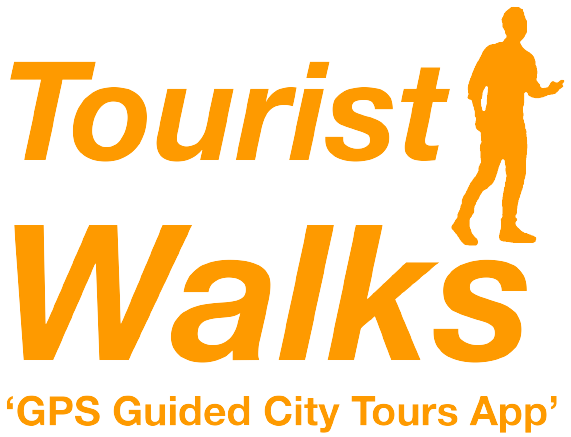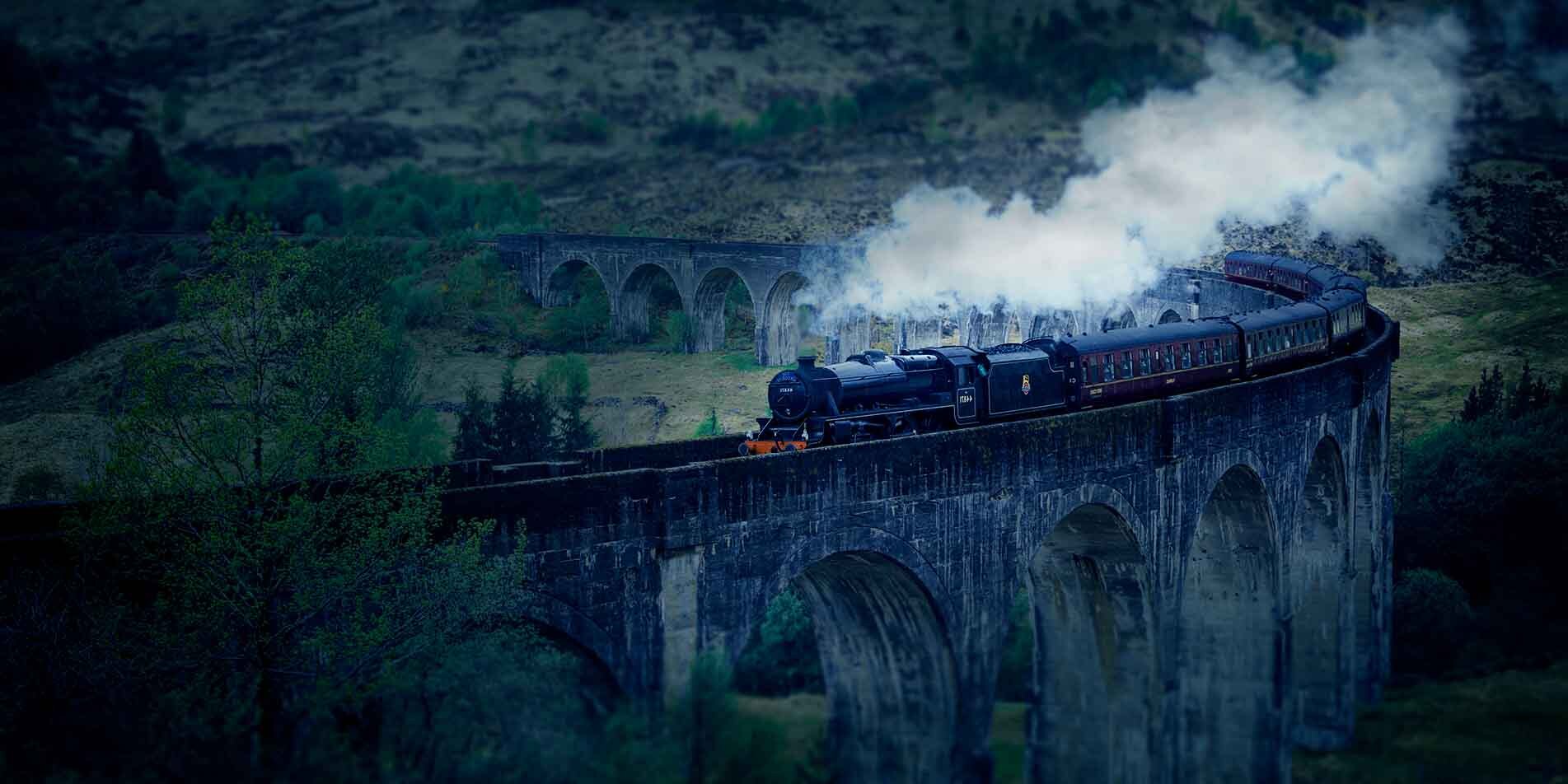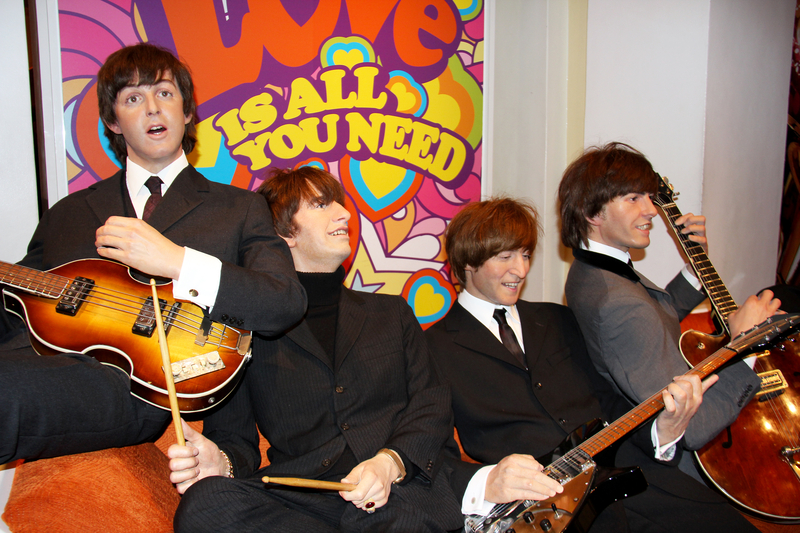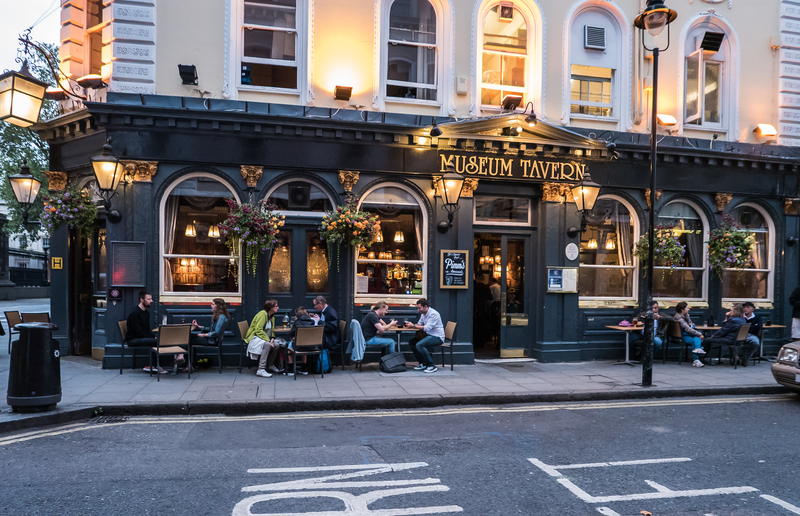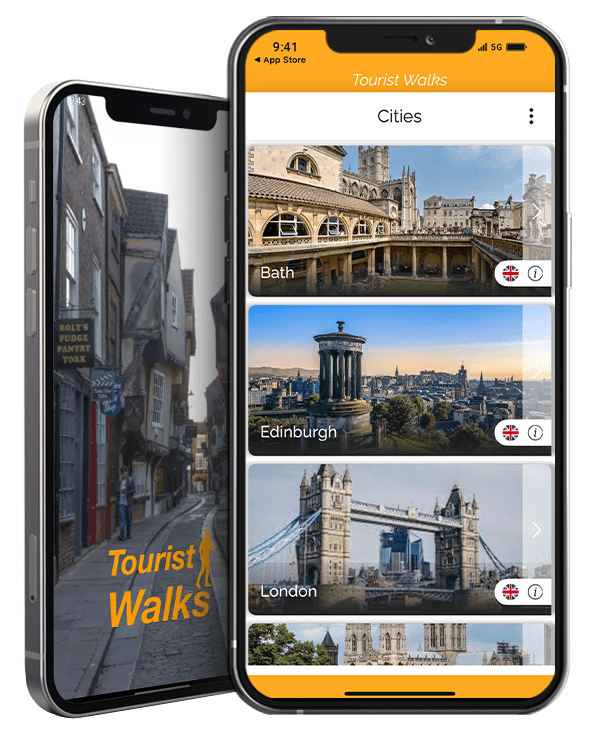
Shakespeare's London
William Shakespeare is regarded as one of the greatest playwrights there has ever been. The dramas, such as Hamlet, Romeo and Juliet, Othello, King Lear, and Macbeth are among the finest creations in the English language, translated into every major language and performed more often than those of any other author. Born in Stratford-upon-Avon, Warwickshire in 1564, Shakespeare began a successful career in London as an actor and writer sometime around 1585. The Rose Theatre in the Southwark district is the place where his plays were staged for the first time. Later, the performances moved to the original Globe Theatre after it was built in 1599. Today you can visit the archaeological sites where both theatres once stood, while the new Globe Theatre makes it possible to travel back in time and see a show in the same way you would have in Shakespeare’s time.
Locations
Miles Covered
Users
Benefits
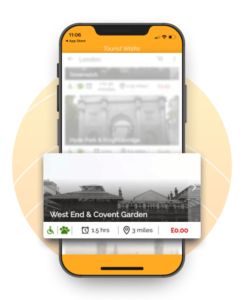
FREE App with A FREE WALK in Every City
Each walk delivers a unique and fascinating user experience. Through Tourist Walks’ self guided tour application you can explore the hidden gems created by local experts. For people wanting to explore the neighbourhood and experience the local culture, we provide a unique experience of exploring the city using GPS guided audio tours. We provide a free walk to our new users.
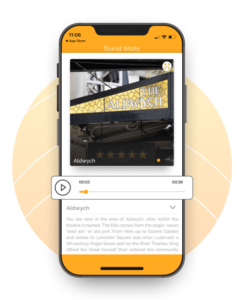
Full Audio Visual Commentary
Tourist Walks is an application that can give you the freedom to explore the famous walks at your own discretion. We have created a full audio-visual self-guided experience that gives you the confidence to explore and discover the stories of various cities on your own.
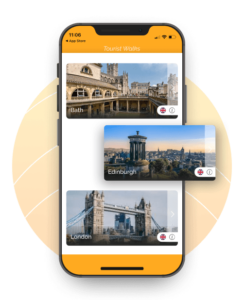
Visit the Best Tourist Sites & Explore Them
Get a list of all the tourist sites you can visit. The Tourist Walks application will guide you to your next destination because every journey starts with a single step.

GPS and Multilingual Audio and Text Guidance
Even if you don’t understand the local language of the city you are visiting, Don’t worry. Audio guided walks have multilingual text assistance that will guide you in your native language.
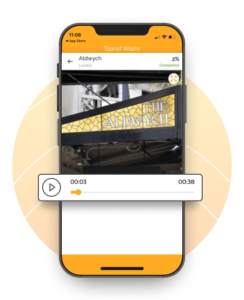
Start/Stop/Rewind
/Restart Go at Your Own Pace
Tourist Walks’ audios are narrated by professionals who will keep you entertained while you are walking your way to the next destination. We help you discover the city around you in a more impressive way.
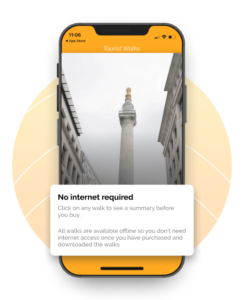
Download the Walk App & Use Offline. No Mobile Data Required.
It is always frustrating when you wish to travel somewhere but your mobile phone service is out-of-order. Don’t worry! Tourist Walks comes with an offline version of built-in maps you might need, even without internet access.
- Free walk
- Full Audio Visual
- Tourist Sightseeing
- Multilingual Texts
- Easy Audio Access
- Offline App
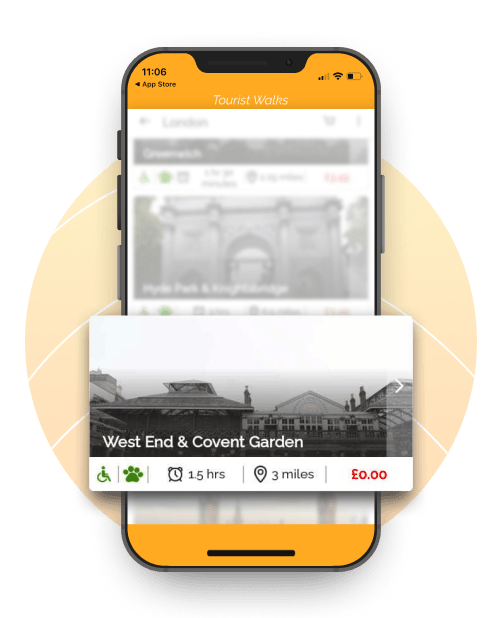
FREE App & Walk Summaries
Each walk delivers a unique and fascinating user experience. Through Tourist Walks’ self guided tour application you can explore the hidden gems created by local experts. For people wanting to explore the neighbourhood and experience the local culture, we provide a unique experience of exploring the city using GPS guided audio tours. The App is FREE, and all the walk summaries are FREE, each walk is individually priced and you can buy all the walks for a city at a discounted price.
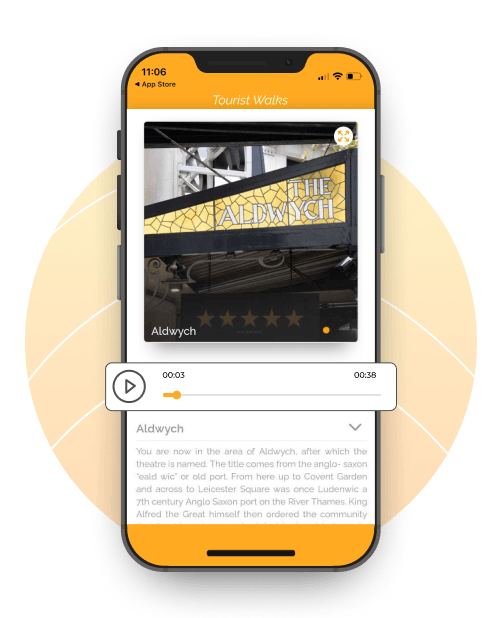
Full Audio Visual Commentary
Tourist Walks is an application that can give you the freedom to explore the famous walks at your own discretion. We have created a full audio-visual self-guided experience that gives you the confidence to explore and discover the stories of various cities on your own.
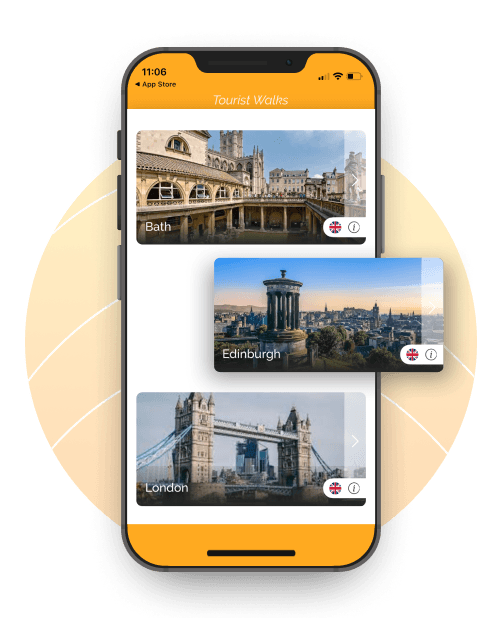
Visit the Best Tourist Sites & Explore Them
Get a list of all the tourist sites you can visit. The Tourist Walks application will guide you to your next destination because every journey starts with a single step.

GPS and Multilingual Audio and Text Guidance
Even if you don’t understand the local language of the city you are visiting, Don’t worry. Audio guided walks have multilingual text assistance that will guide you in your native language.
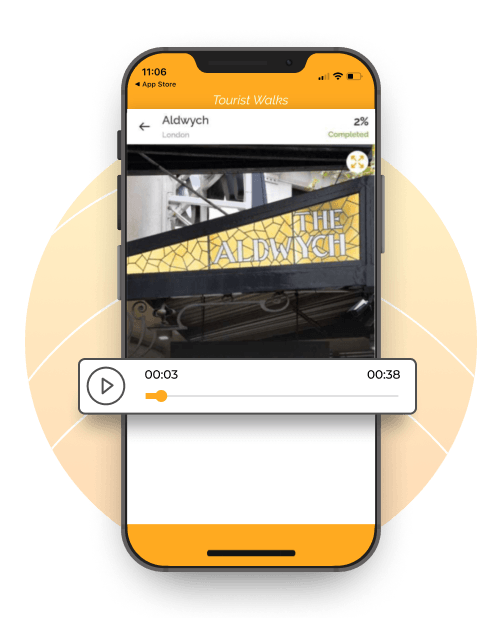
Start/Stop/Rewind
/Restart Go at Your Own Pace
Tourist Walks’ audios are narrated by professionals who will keep you entertained while you are walking your way to the next destination. We help you discover the city around you in a more impressive way.
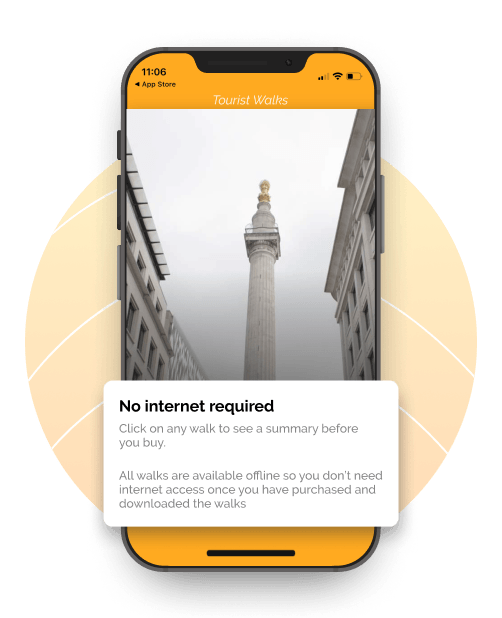
Download the Walk App & Use Offline. No Mobile Data Required.
It is always frustrating when you wish to travel somewhere but your mobile phone service is out-of-order. Don’t worry! Tourist Walks comes with an offline version of built-in maps you might need, even without internet access.
Walk where the great bard trod on this classic Shakespeare's London Tour
- Tour Name - Shakespeares London
- Tour Location - London
- No. of Attractions - #13
- Tour Starting Point - The Globe Theatre
- Tour Ending Point - St Andrew by the Wardrobe
- Attraction Points -
- The Globe Theatre
- The Rose Theatre Remains
- Old Globe Theatre Site
- Southwark Cathedral
- The Boars Head Inn
- Crosse Keys Inn Theatre
- St Helens Bishopsgate
- First Folio Monument
- St Olaves Silver Streetl
- St Pauls Cathedral
- Richard Quiney Plaque
- Blackfriars Gatehouse
- St Andrew by the Wardrobe
Find our Shakespeare's London highlights below
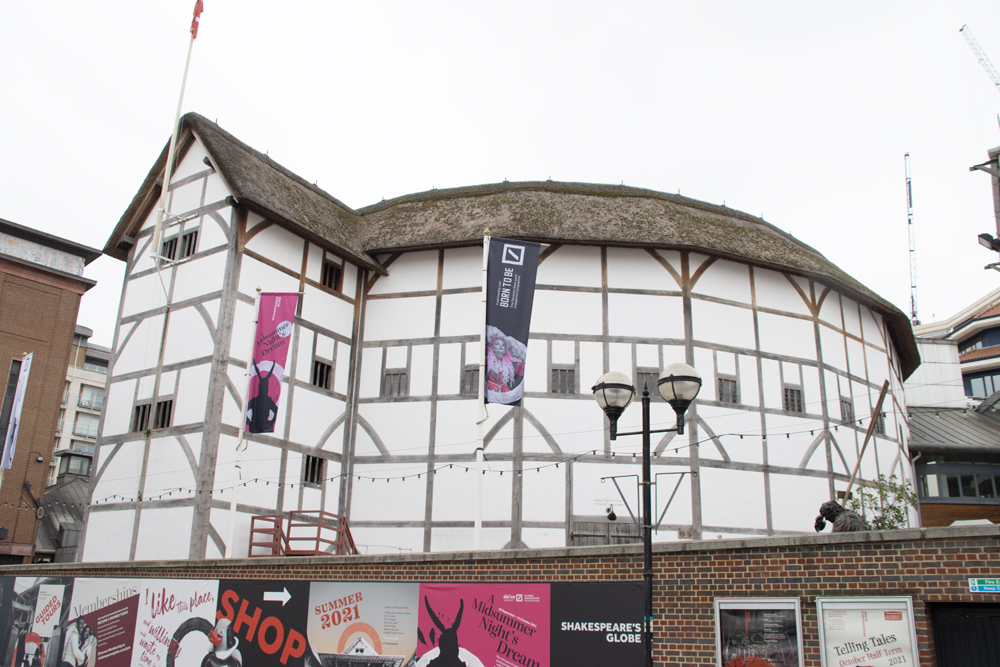
The Globe Theatre
Shakespeare’s Globe is a modern, safer, copy of the original Globe Theatre, that was located nearby. The original playhouse was built in 1599 and rebuilt in 1613 after a fire. It was demolished in 1644. We visit its actual location on another part of this tour. The modern Globe opened in 1997, with a performance of “Henry V”. It’s regarded as a very realistic reconstruction, though it holds fewer people due to the need for modern safety standards. It is located about 230 meters (750 feet), from the site of the original. The original was located on the banks of the Thames, which at that time was wider. To get the same atmosphere, the builders decided to locate the modern Globe on the river bank. The copy is the brain-child of American actor Sam Wanamaker, who had moved to London in the 1970s and began working on this vision. Find out more on our tour.
The Rose Theatre Remains
The Rose was an Elizabethan theatre, built very close to the site of the original Globe Theatre. It was built in 1587, at least ten years before the Globe opened its doors. It’s early years saw a number of acting companies come, and go, and times were tough. The early 1590s saw a severe outbreak of the plague in London, which meant the theatre was closed for several seasons. When it did open up again and it had gained some popularity, the “Lord Admiral’s Men”, worked at the Rose for seven years. When their popularity was at its height, they performed 36 plays, 20 of them new works. “The Lord Admiral’s Men” were formed by some members of the “Lord Chamberlain’s Men” in 1591. Find out more on our tour.
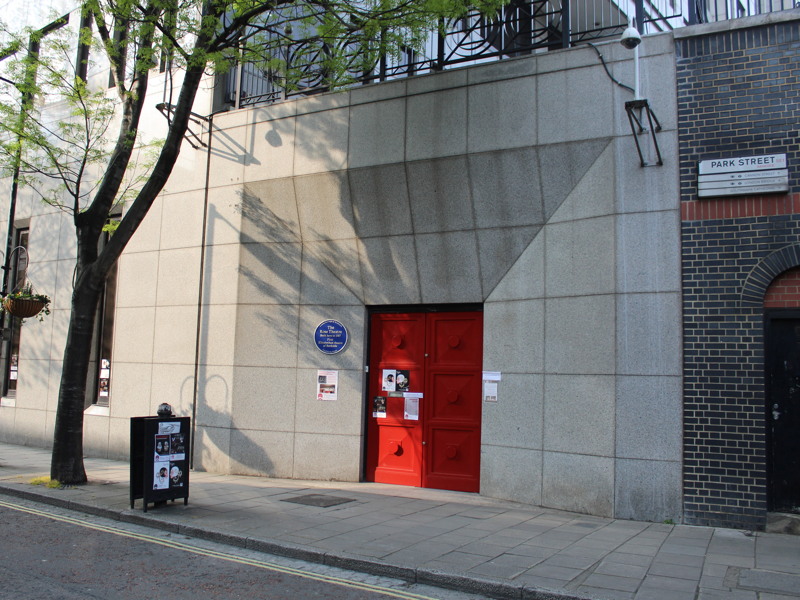
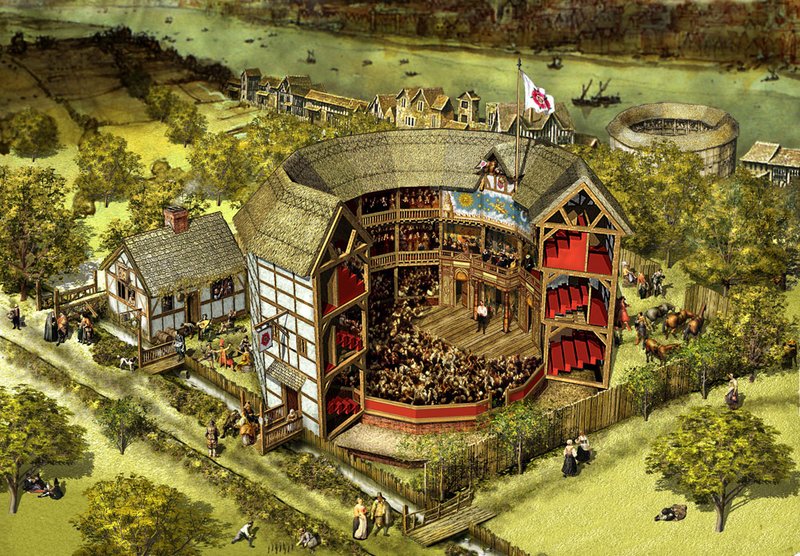
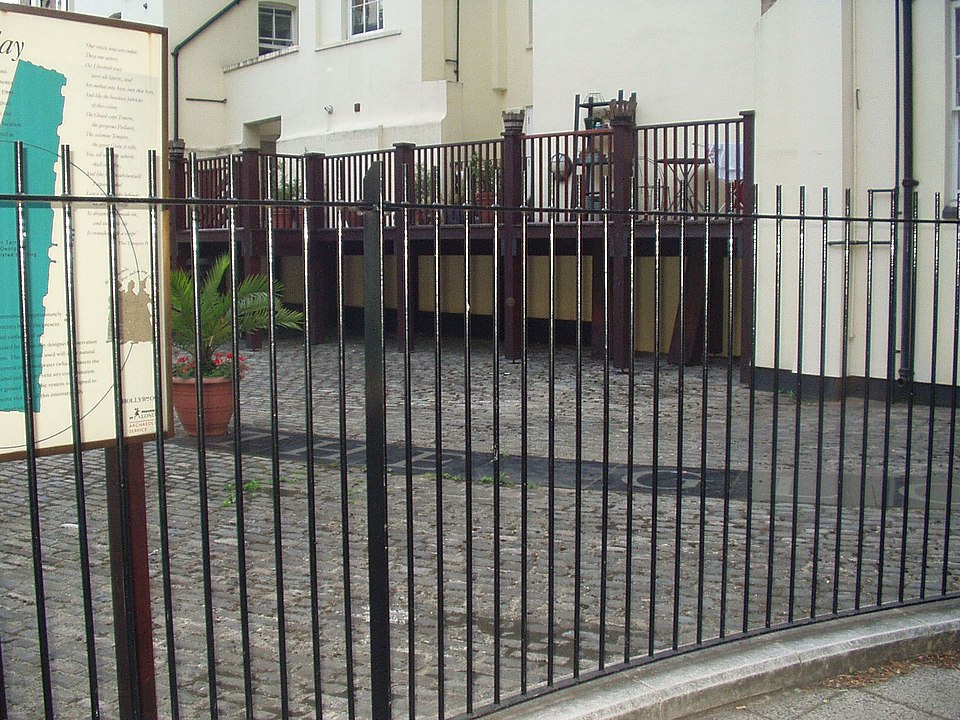
Old Globe Theatre Site
This is the site on which the original Globe theatre stood. It was first opened in 1599, and is now marked by a plaque, and a series of information boards. Park Street was originally called Maiden Lane, and it was part of “The Liberty of the Clink”. This meant the area was outside of the control of the City officials, and the Surrey County Sheriff. At some point in time, the area fell under the jurisdiction of the Bishop of Winchester who, instead of banning them, taxed them instead. This included the theatres, animal baiting rings, and even the brothels. Find out more on our tour.
Southwark Cathedral
Southwark Cathedral was built between 1220 and 1420. In Shakespeare’s time, this was a parish church, and it was known as St. Mary Overie. It served the Bankside area in the late 1500s, and so Shakespeare and many of the actors in his plays would have known the Cathedral, and even worshipped here. Shakespeare’s brother, Edmund, was buried here in 1607 in an unmarked grave. A memorial stone was later placed for him in the choir area. There is also a stained glass dedicated to Shakespeare’s plays, along with a statue of him, writing with his quill in his hand. Find out more on our tour
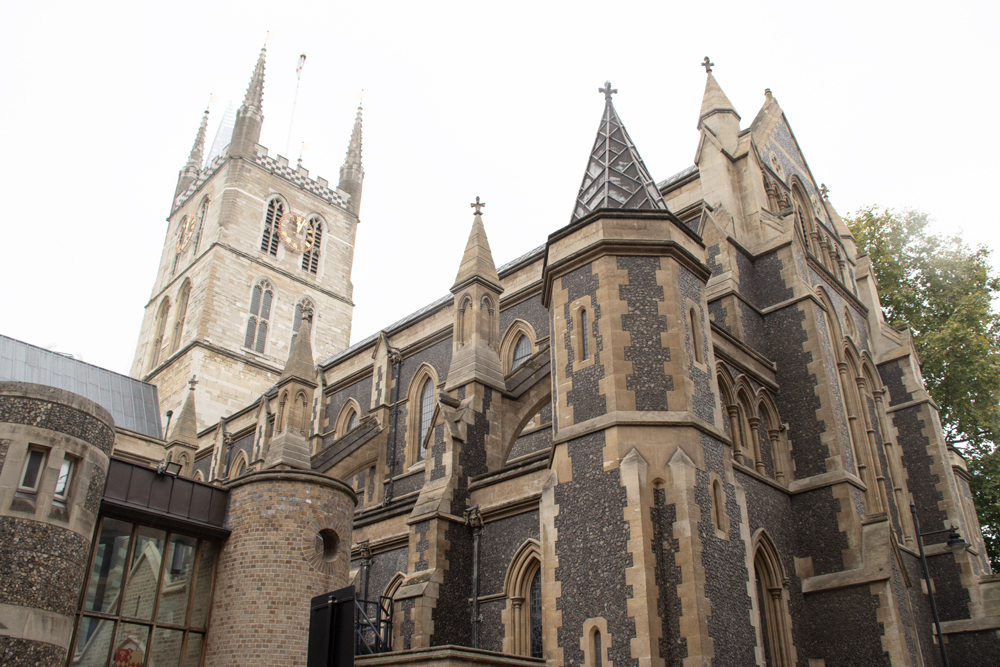
Book Your Covent Garden Tour Today!


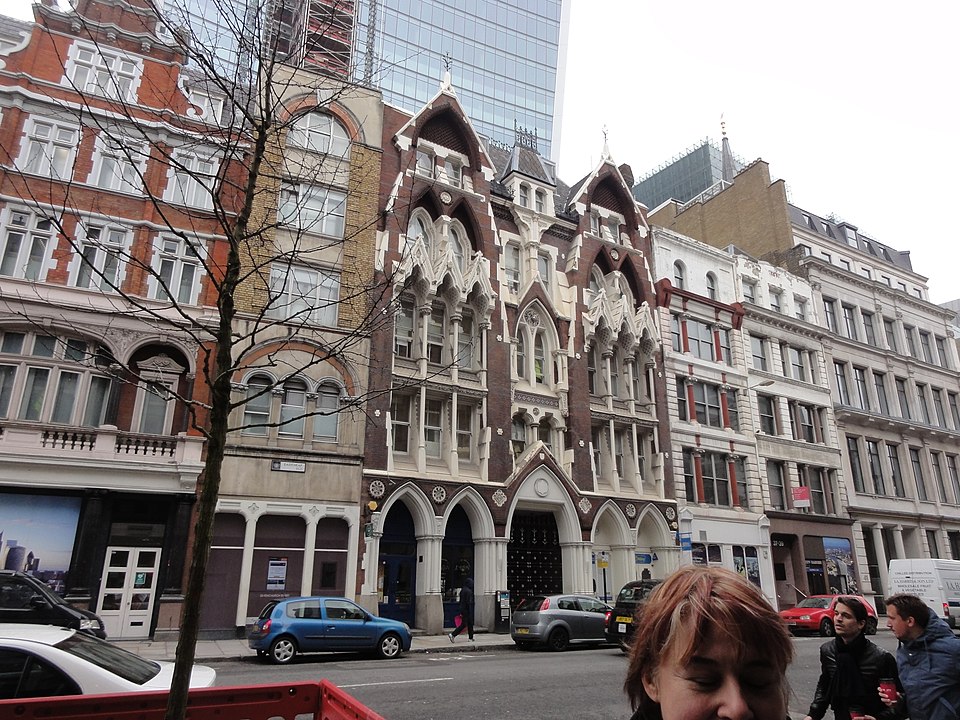
The Boars Head Inn
The Boar’s Head Inn was famous in its time, and was featured in William Shakespeare plays, particularly Henry IV, Part 1, as a favourite meeting place of Sir John Falstaff, Prince Hal, and other characters. There was a Boar’s Head pub here in the 16th century, but there is no evidence of its existing in the early 15th century, when the play is set. It appears that Shakespeare must have been referring to a real pub that existed in his own time. It was established before 1537 but, along with so many other buildings, it was destroyed in the Great Fire of London in 1666. Find out more on our tour.
Crosse Keys Inn Theatre
In Tudor times, plays were performed in theatres like the Globe or the Rose, but many people saw plays at inns. Inns were formed around central courtyards, and the rooms had balconies overlooking that area. This design was not an accident; most travellers arrived by horse, or horse-drawn carriage, into the central courtyard. That courtyard made the perfect stage to put on plays, as guests could watch the show from their balconies, and then return to their rooms. Acting groups could set up a stage, and sell standing tickets for the courtyard, and premium tickets for the balconies. The designs of the Globe and other Elizabethan theatres, with balconies surrounding a central courtyard, were taken directly from the inns. At the Crosse Keys there may have been a courtyard here, like other inns, or possibly it had a large room for where actors performed. Find out more on our tour.
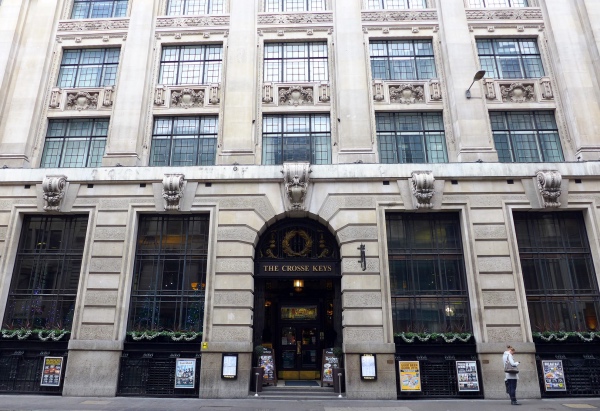
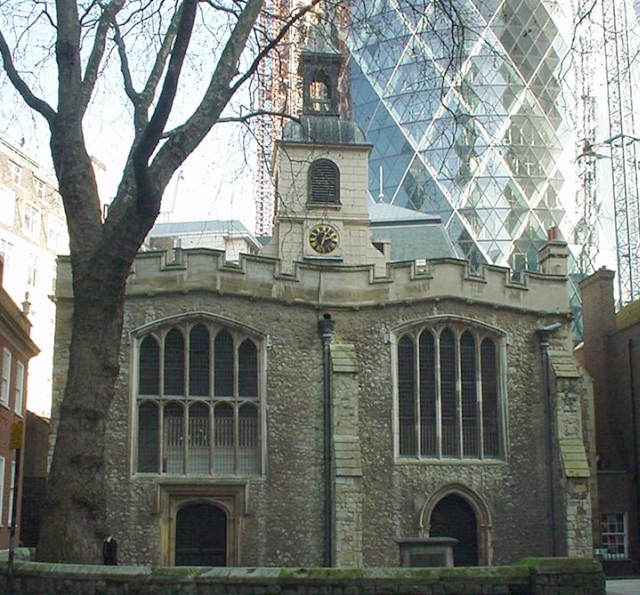
St Helens Bishopsgate
St Helen’s Bishopsgate church is one of the few survivors of the Great Fire of London. It is unusual, in that it has two naves, one for the church-goers, and one for the Benedictine nuns who used to live here. The church is famous for having, at some point, among its parishioners, the bard himself William Shakespeare. There is an interesting record, made on 15 November 1597, by the tax collectors for the Ward of Bishopsgate, stating that of 73 rateable residents of the parish, William Shakespeare failed to pay 5 shillings on taxable goods worth £5. Find out more on our tour.
This pink granite monument with a bust of Shakespeare, commemorates the “First Folio” of Shakespeare’s plays. The “First Folio”, printed in 1623, is the first published collection of Shakespeare’s plays, produced seven years after his death. It was printed in 1623. Its title is Mr. William Shakespeare’s Comedies, Histories & Tragedies, and it groups his plays into those categories for the first time. By the time of Shakespeare’s death, 18 of his plays had already been published, so the First Folio included those, plus another 18 previously unpublished, the total published was therefore 36. Find out more on our tour
First Folio Monument
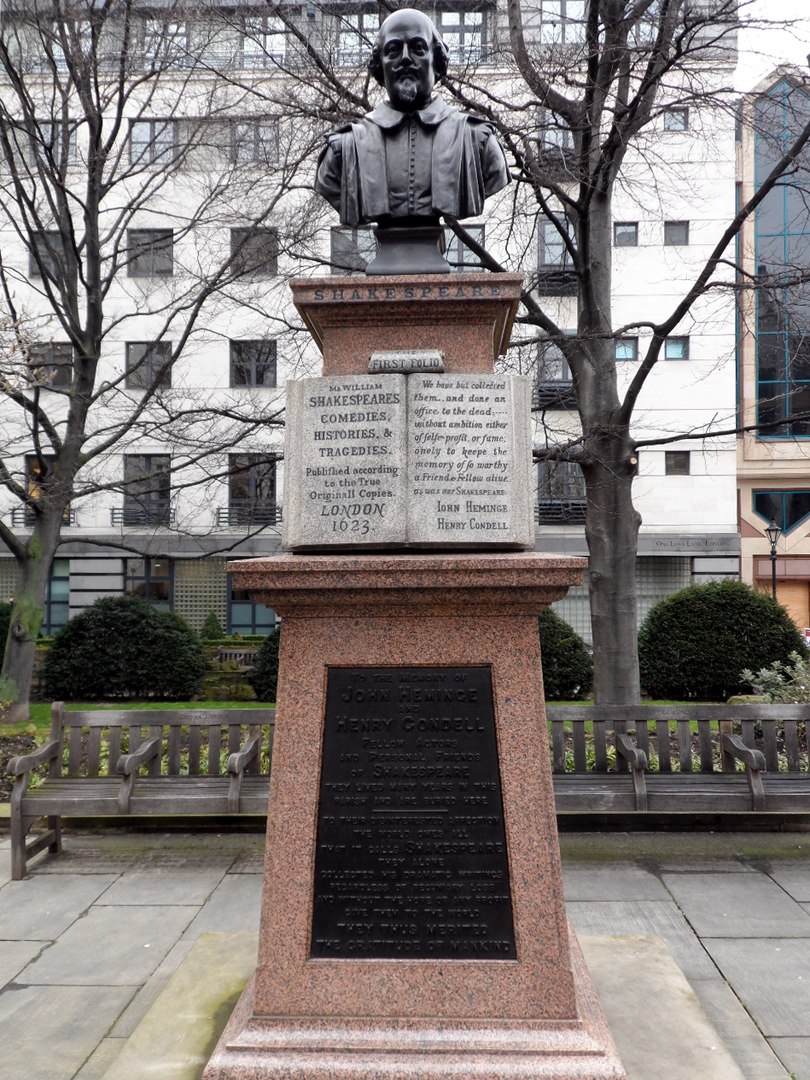
Book Your Favourite Walk Now!


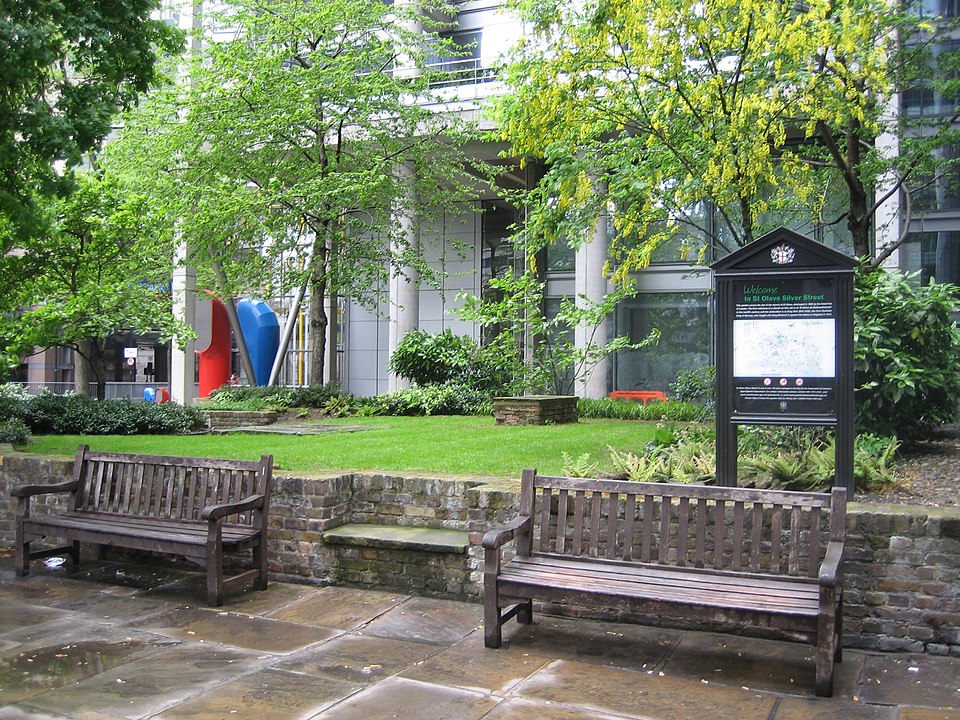
St Olaves Silver Street
In 1604, Shakespeare lived in Silver Street, lodging in the house of French Huguenot, Christopher Mountjoy. It was in that house that Shakespeare wrote Othello and King Lear. Unfortunately, the house burned down in the Great Fire of 1666, and the entire area was redeveloped after the second world war. Silver Street was a short street, and contained a church, “Saint Olave’s”, which was almost opposite to the house where Shakespeare lived, and which also perished in the Great Fire. Find out more on our tour.
St Pauls Cathedral
The medieval St Paul’s Cathedral, that existed on this site, was one of the largest European churches of its time, whose spire dominated the skyline of London, until it burned down in the Great Fire of 1666. During Shakespeare’s lifetime, the area around St Paul’s was very different to what it is today. Apart from being the centre of religious, political, cultural and social life in the city, the Cathedral was also the heart of London’s book trade, and its environment was quite important in shaping the literary works of that period. By 1600, Shakespeare was the most published professional dramatist, and the first editions of his plays including “Titus Andronicus”, “Richard II”, “Richard III‘, Henry IV part 1, Henry IV part 2, “Much Ado About Nothing”, and ‘The Merchant of Venice”, were all bought and sold in St Paul’s Churchyard. Find out more on our tour.
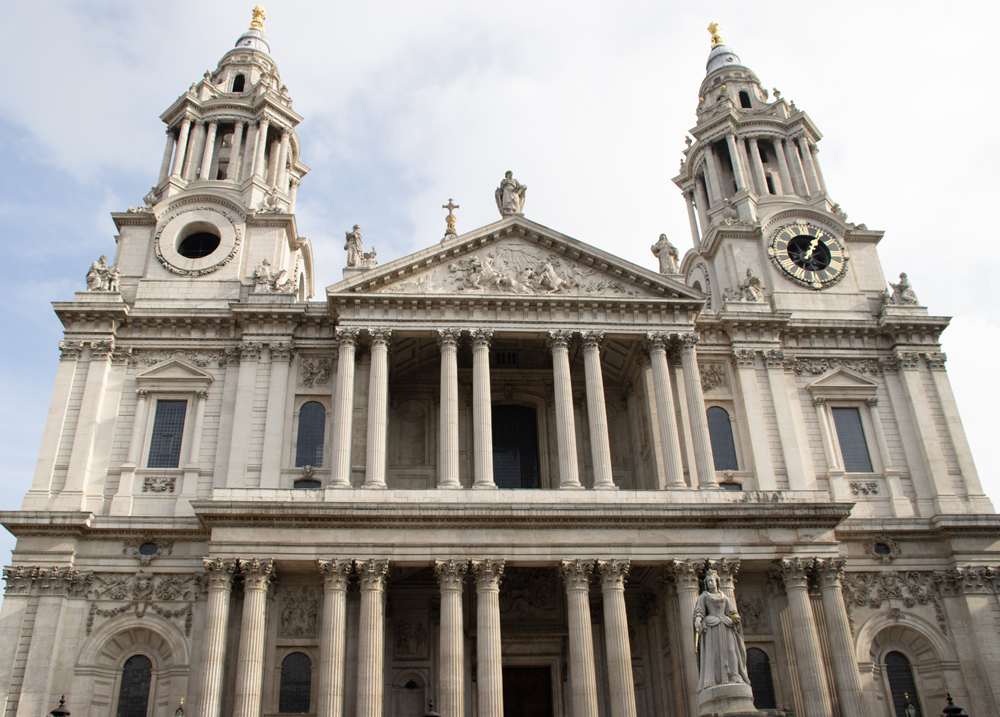
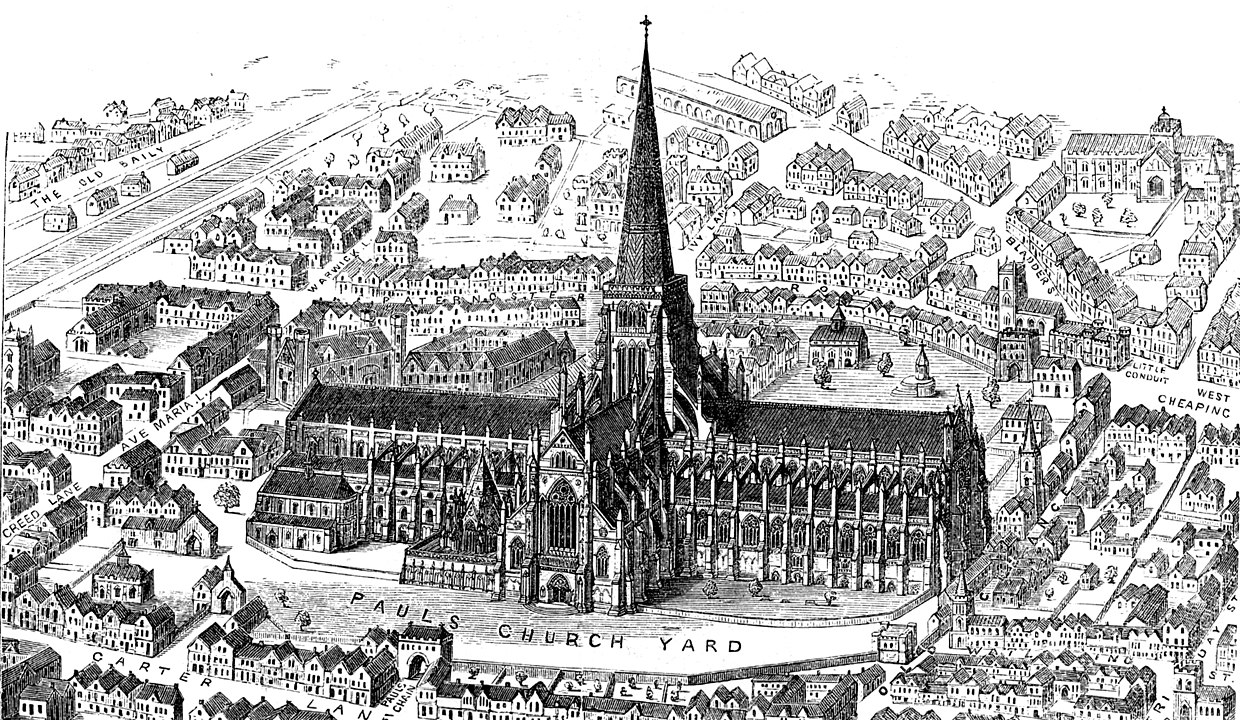
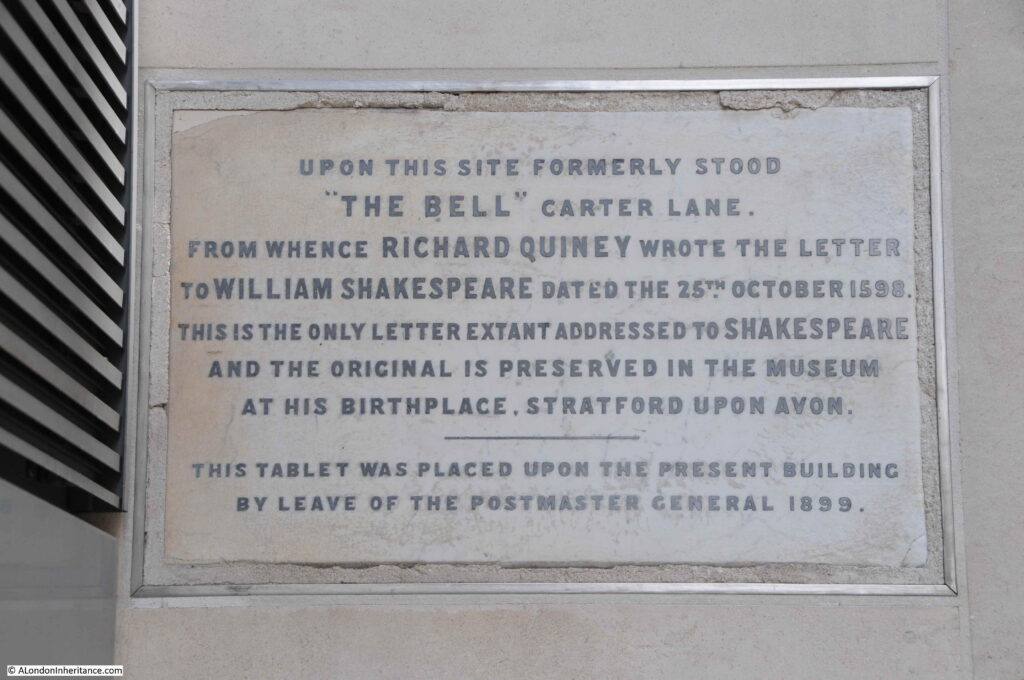
Richard Quiney Plaque
This plaque commemorates the only surviving “Richard Quiney” letter to William Shakespeare, the original copy of which is held by the Shakespeare Birthplace Trust in Stratford upon Avon, Shakespeares home town. The letter is dated to 1598, and was sent by Richard Quiney, a textile merchant , and council official, from Stratford to his “loving good friend and countryman, Mr. William Shakespeare”. He was asking for a loan of £30, which would be about £3,750 today. The son of Richard Quiney later married Shakespeare’s younger daughter, and he came to London on business, where he stayed for four months, to get away Stratford, where things were pretty bad at that time, from the latest taxes voted in by Parliament. Find out more on our tour.
Blackfriars Gatehouse
The gatehouse, to the area known as Blackfriars, stood approximately where the Cockpit pub stands today, just a short walk away from the Blackfriars Playhouse Theatre, in Ireland Yard. There, the King’s Men acting company put on Shakespeare’s plays, at about the same time as they did at The Globe. The theatre itself stood on the site of a Dominican monastery, established in 1275, located between the River Thames and Ludgate Hill, and dissolved in 1538 by King Henry VIII. Records say that William Shakespeare bought the gatehouse on 10 March 1613 from Henry Walker, a “citizen and minstrel”, which is a musician, for £140, and left it to his daughter Susanna. The deed of purchase for the property still exists, and is kept at the London Metropolitan Archives, containing one of only six “authenticated” examples of a Shakespeare signature. Find out more on our tour.
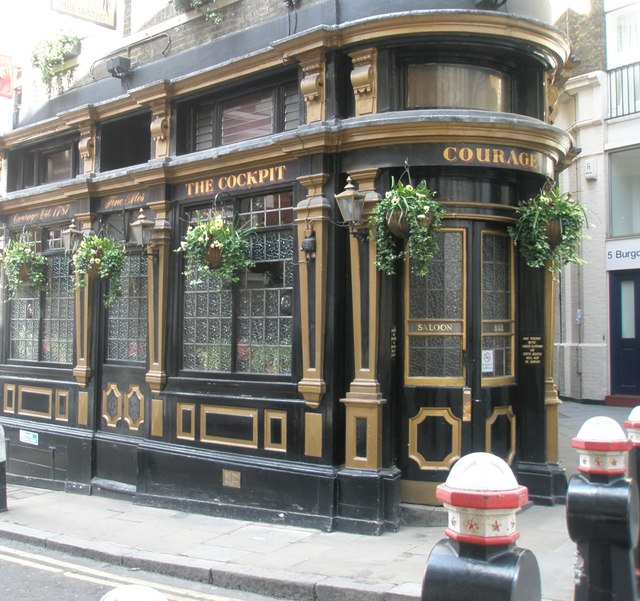
Book Your Favourite Walk Now!


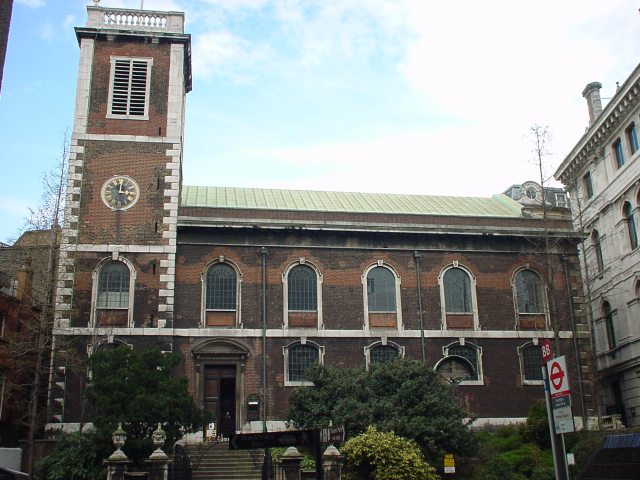
St Andrew by the Wardrobe
The building you see today was reconstructed after the London blitz. The church was rededicated in 1965. While the construction is newer, most parts of the building came from destroyed, or demolished, historic churches. For 15 years of his life, Shakespeare lived and worked in this area. His house was in Ireland Yard, and he worked at Blackfriars Theatre. There is a memorial to him in the church. Find out more on our walk.
Other Recommended Walks in the City
London Pub Walks Video Gallery
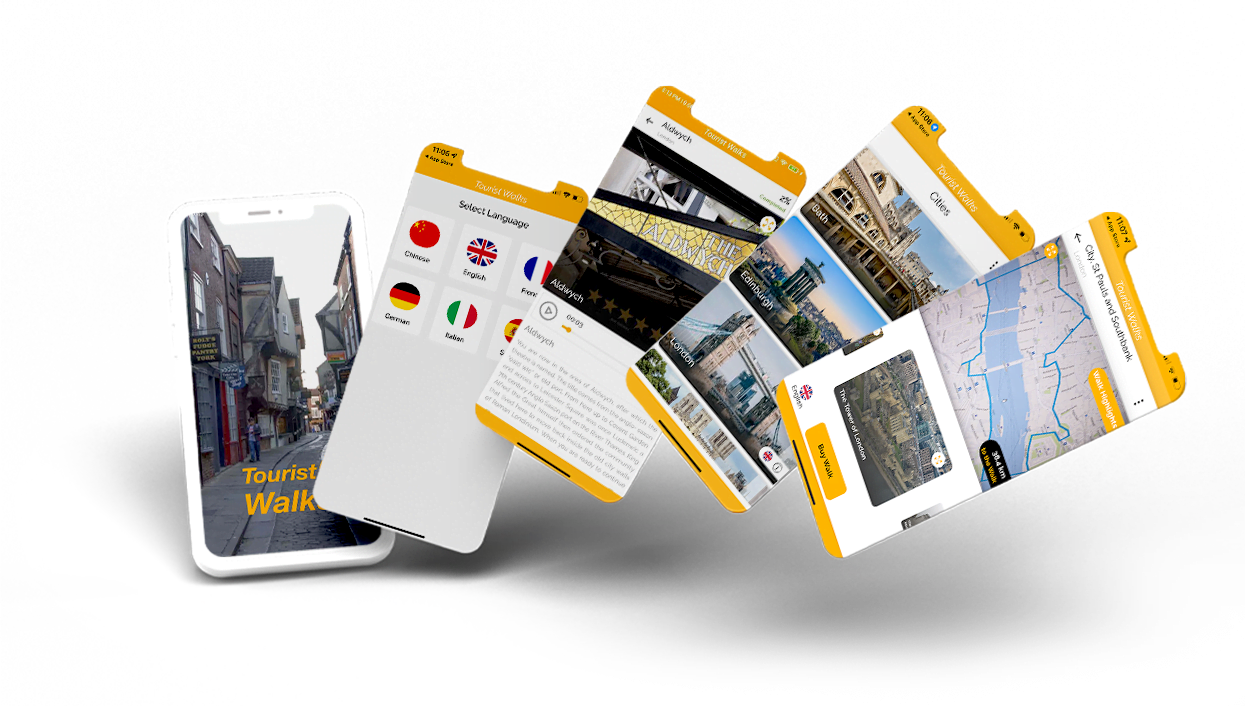
SELF GUIDED WALKS
Do you wish to explore all the beautiful tourist spots? Download our application and discover the hidden beauty and mystery of your destination. Explore today!


Frequently Asked Questions
No. After the walks have been downloaded, for which you need an internet connection, no mobile data is required to do the walks.
No you can pause and resume at any point within the walk. Whether you need a coffee or a comfort break the walks are entirely flexible.
Yes you will receive both verbal guidance and a GPS enabled map to take you around each of the points of interest on the walks.
No the walks are circular so you will receive multiple options of where to start each walk.
Yes there are providing you buy them as a bundle, not one at a time. You can even buy all the walks in one package at a very generous price.
For each point of interest you will get information both verbally and in text and sometimes video form together with helpful images to get the most from each one.
You can pay by all manner of credit and debit cards as well as Paypal.
In the walk summary we point out if the walk is suitable for wheelchairs and pets, and there is also an indication of the distance of the walk, and how long it will take.
Yes we would love to hear from you through our website: www.touristwalks.co.uk
Happy Tourists

I absolutely enjoyed using the Tourist Walk app! The guided walking tours are very informative and interesting. I was able to find the tour I wanted quickly and easily, and the app was very easy to navigate. The walking tour itself was a lot of fun, and I learned a lot about the city. Overall, I would highly recommend this.

Carla Mathew
Tourist Walk is an excellent walking guide app. It is extremely user-friendly and provides great information on the various tours available. I would highly recommend this app to anyone visiting a new city!

Shaun Miles
Tourist Walk is an amazing app that provides guided tours of various cities. The app is extremely user-friendly and easy to navigate. I was able to find the tour I was looking for quickly and easily. The tour itself was very informative and interesting. I would highly recommend this app to anyone visiting a new city!

